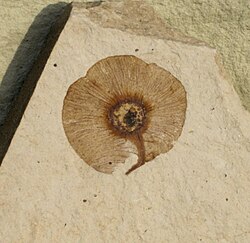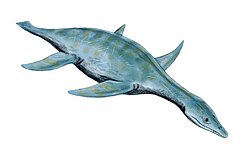Top Qs
Timeline
Chat
Perspective
1935 in paleontology
From Wikipedia, the free encyclopedia
Remove ads
Paleontology or palaeontology is the study of prehistoric life forms on Earth through the examination of plant and animal fossils.[1] This includes the study of body fossils, tracks (ichnites), burrows, cast-off parts, fossilised feces (coprolites), palynomorphs and chemical residues. Because humans have encountered fossils for millennia, paleontology has a long history both before and after becoming formalized as a science. This article records significant discoveries and events related to paleontology that occurred or were published in the year 1935.
Remove ads
Plants
Summarize
Perspective
Conifers
Flowering plants
Remove ads
Arthropods
Insects
Sauropterygians
New taxa
Vertebrates
Summarize
Perspective
Dinosaurs
Synapsids
Remove ads
Expeditions, field work, and fossil discoveries
- Charles Gilmore returned to prospect for fossils in the Two Medicine Formation.[9]
Institutions and organizations
- The Calgary Public Museum of Alberta, Canada closed due to financial problems triggered by the Great Depression. By this point the museum had accumulated roughly 7500 different items of both natural and man-made origin. The collections were stored in another Calgary building called the Coste House.[10]
References
Wikiwand - on
Seamless Wikipedia browsing. On steroids.
Remove ads








